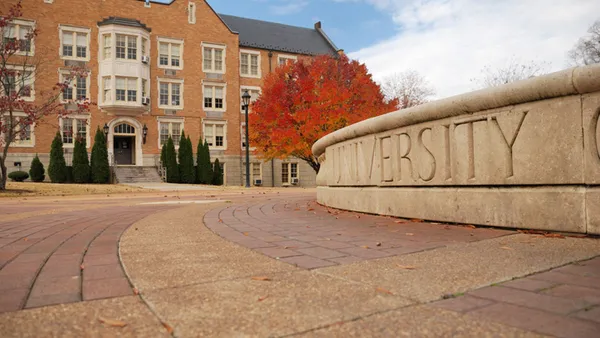Dive Brief:
- Small colleges can boost their viability by strengthening their student pipelines, but they must make these moves before enrollment declines sap their reserves and other resources, according to a new report from Fitch Ratings.
- Certain types of initiatives — including tuition resets, scholarship aid and direct admissions — can attract students. But colleges must maintain fiscal balance while pursuing them.
- Moreover, “modest enrollment growth” may not be enough for colleges to recover from pandemic-related disruptions and demographic shifts. Smaller colleges in the Northeast and Midwest, for instance, face a shrinking pool of high school graduates as well as people moving away from the region.
Dive Insight:
Fitch’s new analysis paints a grim picture for small U.S. colleges. Institutions that don’t improve their finances by cutting their costs may be forced to restructure, close or merge, according to the analysts.
These moves will likely be concentrated among smaller colleges that rely heavily on tuition, making them more vulnerable to changes in enrollment levels. Colleges that have recently closed fall in this bucket.
Medaille University, a New York institution that had 1,800 students in fall 2021, announced earlier this year that it will shutter in August in the face of declining enrollment and growing financial difficulties. The announcement came after plans to be acquired by Trocaire College fell through.
Similarly, the roughly 1,400-student Cardinal Stritch University, in Wisconsin, closed in May. The president attributed the closure to steep enrollment declines and pandemic-related financial problems.
Colleges hoping to improve their market standing might be adding regional recruiters, adopting rolling admissions, waiving application fees, freezing tuition and growing their nondegree offerings, the analysts said.
Some colleges have taken more drastic moves.
Fitch Ratings pointed to Roosevelt University, in Chicago, which announced it was slashing its sticker price from around $33,000 to $20,000 for this fall’s incoming students — a 40% reduction. Tuition resets are gaining popularity as evidence suggests students might dismiss some colleges due to their advertised cost, which few people actually end up paying.
Other institutions have seen investments in new programs pay off. Faulkner University, in Alabama, has partially offset undergraduate enrollment declines with increased student headcounts in new graduate programs.
Fitch’s analysts contended that community colleges can provide a pool of transfer students for small colleges. Although the coronavirus pandemic battered the two-year sector, data from spring 2023 shows enrollment grew 0.5% year over year among these institutions.
However, small colleges will likely face competition from less expensive public colleges, which also hope to draw students from this sector. Analysts gave the example of Marist College, a private institution in New York, which has weak transfer enrollment due to stiff competition from the public State University of New York system.














